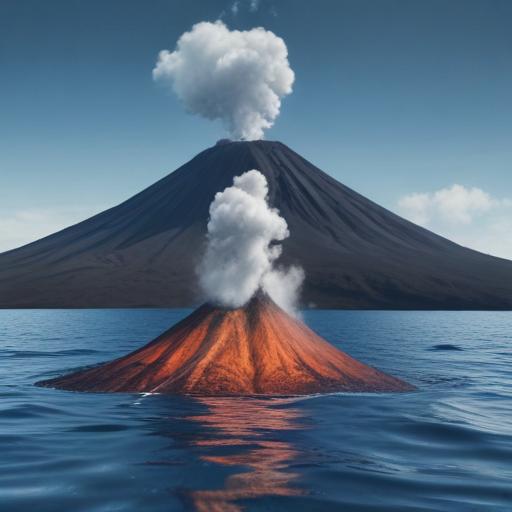Approximately 300 miles off the coast of Oregon, the underwater volcano Axial Seamount shows signs of awakening, according to scientists who have monitored the site for decades. A recent surge in seismic activity, including a significant increase in earthquakes and swelling of the volcanic structure, suggests that an eruption could occur any time now, potentially by the end of the year.
Bill Chadwick, a volcanologist at Oregon State University, describes how a network of seafloor sensors has been crucial in tracking the volcano’s current activity. Recent data reveal alarming trends, with more than 1,000 earthquakes recorded each day in late March and early April. The swelling of the seafloor, indicative of magma accumulation, is a critical signal of potential eruption.
Chadwick compares Axial Seamount to Hawaiian volcanoes that produce fluid lava flows. He explains that the seafloor’s inflation is similar to a balloon expanding. Fortunately for humans, Axial Seamount poses no immediate danger; it lies submerged about a mile underwater and hundreds of miles offshore, making any potential eruption undetectable on land.
While the eruption would lack destructive forces typically associated with volcanic events, it could still be a magnificent natural spectacle. The last eruption in 2015 unleashed a colossal amount of magma, forming lava flows that measured about 450 feet thick.
Axial Seamount formed above a geological hot spot, where molten rock from the Earth’s mantle rises. Its unusual location at the boundary between the Pacific and Juan de Fuca tectonic plates continually generates volcanic activity and creates new ocean crust.
Over the past 30 years, Chadwick has studied Axial Seamount’s eruptions, which have occurred three times since 1998. As scientists anticipate another eruption, they are exploring the patterns of its activity to improve the accuracy of eruption predictions. However, volcano forecasting is still fraught with challenges due to the unpredictable nature of volcanic behavior.
The volcano presents an extraordinary opportunity for researchers. Unlike land volcanoes, where erroneous forecasts can cause widespread panic and economic loss, the remote Axial Seamount allows for rigorous testing of forecasting models without adverse consequences for human populations.
Ultimately, scientists hope to refine their predictive capabilities through the study of Axial Seamount, paving the way for better understanding and forecasting of volcanic activity in the future. The unfolding events serve as a reminder of nature’s power and the ongoing quest for knowledge in seismology and volcanology.
